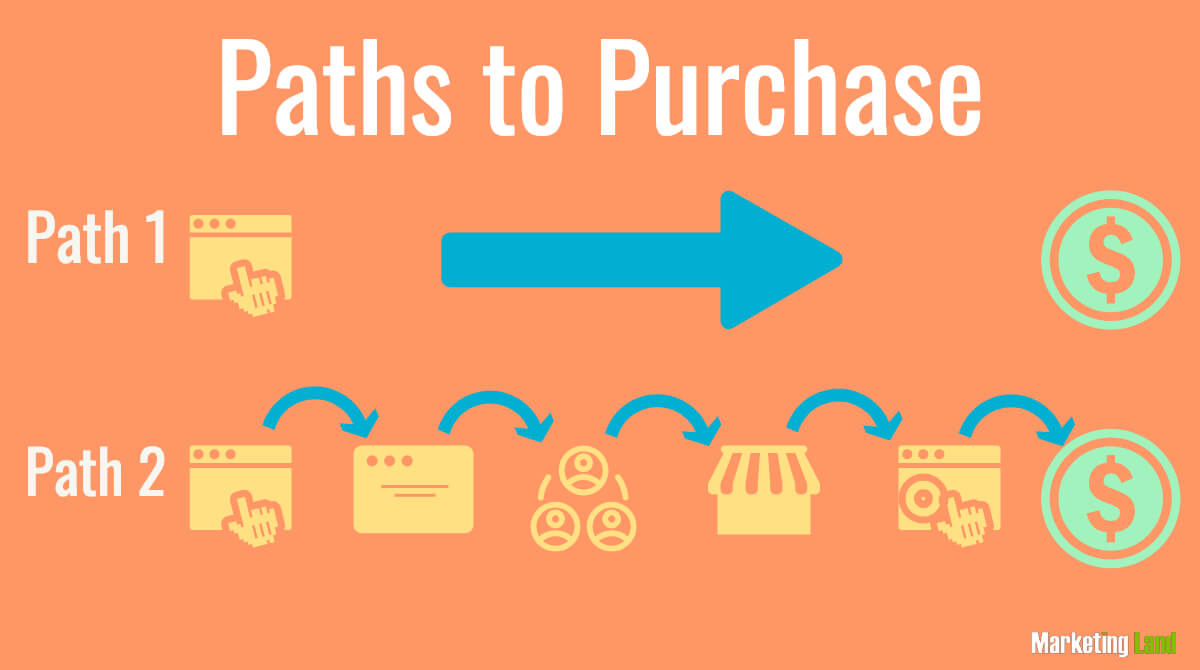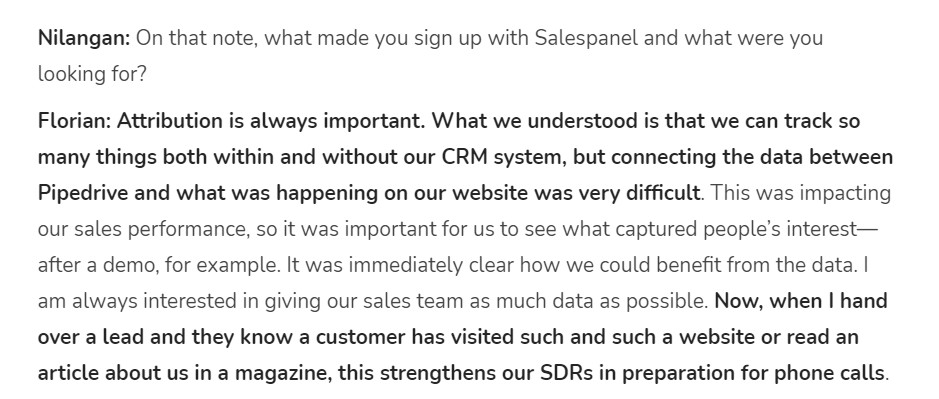Marketing Attribution – Benefits, Best Attribution Tools for B2B
In B2B, the buyer’s journey isn’t very linear. Prospects engage with a brand from an average of 10 channels before making a purchase. With so many marketing channels to handle, marketers are faced with the challenge of tracking which particular touchpoint or campaign impacted the conversion of a prospect.
How do you solve this issue? With marketing attribution.
So what is marketing attribution? How does it benefit the marketing efforts?
This article will explain everything you need to know about marketing attribution, its benefits as well as the best attribution tools.
What is marketing attribution?
Marketing attribution is the process of evaluating different marketing touchpoints buyers interact with before arriving at a sale or conversion.
As mentioned earlier, the consumer buying journey is far from linear. Imagine a typical buyer journey: prospects read content on Linkedin and blog –> you retarget them and show them ads to promote a lead magnet –> lead is captured and you send them emails -> user is nurtured -> more stuff happens –> user gets passed to sales –>becomes a customer.
Which marketing channel is attributed to the buyers’ conversion? The goal of marketing attribution is to understand how touchpoints are helping in creating customers.
However, it goes beyond simply analyzing data to know the best performing marketing campaign or channel. Marketing attribution involves a combination of out of the box thinking, effective data correlation, and an attribution model to identify what works and use the insights to make better marketing decisions.

Image Source: marketingland.com
Benefits of Marketing Attribution
So does marketing attribution only provide a detailed overview of the impact of marketing efforts? No, other great benefits come with marketing attribution. Here are 5 benefits you can derive from marketing attribution.
1. Connecting marketing efforts to revenue
Famous marketing pioneer, John Wanamaker once quoted “Half the money I spend on advertising is wasted, the trouble is I don’t know which half.”
Though this quote dates back to the 19th century, it still highlights the major challenge marketers face today- not being able to connect marketing efforts to revenue.
Marketing attribution allows you to evaluate marketing data to identify specific channels and campaigns that have the greatest impact on revenue growth and then optimizing resources to maximize ROI from them.
Attribution data also provides a deep understanding of the different stages of the buyer’s journey. This information is important to align marketing and sales efforts and ensure they can drive revenue growth.
2. Sales enablement
Sales work becomes more effective when they are armed with sufficient knowledge to close a deal. Marketing data gives sales team an edge on leads. Marketing can collect lead data like company information and activity data and pass it to sales. Sales will know who leads are, where they are from, what they did on your website. For example, if your product is an email marketing software and a particular lead visited your website after seeing your ad on the ‘newsletter software’ keyword and then the lead reads content related to the newsletter feature of your product. What does this information mean to the sales rep?
Sales can also learn which prospects are sales-ready and they can use the insights to provide relevant messaging to these prospects at the right marketing platforms. The bottom line is that with sales having more informed marketing data, they have a better closing rate and customers have a shorter sales cycle. We have actually written an entire eBook on real-time sales enablement without any communication which you can check out from here.
3. Marketing spending optimization
Another benefit of marketing attribution is that it helps marketers get the best of their marketing spend. Considering the different touchpoints and channels that customers engage with, marketers need to be able to know which campaigns and channels are generating qualified customers.
This will not only help cut down marketing spend but will also help identify the best channels to invest their marketing efforts to effectively maximize ROI and conversion rates.
For example, one channel may be more effective at driving in high-value prospects while another may only generate low-value leads. It will make sense to figure out why the channel works better and optimize marketing spend by increasing budget for good campaigns and reducing budget for underperformers.
4. Personalization
Marketing attribution doesn’t just make things better for marketers, it also benefits the customers. When marketers can understand consumer behavior, intent, challenges, and motivation, they can use the insights to improve their messaging strategy to be more specific, valuable, and engaging.
The result of this approach unfolds in different ways. Some of them are:
- Your message resonates with customers.
- You can show highly relevant content.
- You can prioritize relevant leads
- Prospects and customers are most likely to become brand advocates.
5. Analytics and reporting
To learn what works and doesn’t work, you’d need to take a knee dive into data analysis and reporting. However, handling a heavy influx of data from countless marketing channels can be stifling.
Marketing attribution solves this issue by streamlining and aggregating data from all channels, hence providing analytics data on different touchpoints that occur during the buyers’ journey. For example, most viewed content, top-performing campaigns, and website traffic.
As a result, you can evaluate these data to understand buyer’s intent, behavior, needs, challenges, and aspirations. You can attribute each visitor or customer to different attributes and take actions accordingly. This lets you pinpoint the exact touchpoint that led to consumer purchase.
Using attribution takes analytics even further. They provide the best overall picture of marketing efforts by identifying key conversion patterns which can be used to make informed marketing decisions.
Marketing Attribution Tools
While marketing attribution provides a great number of benefits, they can only be achieved when you conduct in-depth data analytics to guide your marketing choices. This means choosing the right attribution tool for data analysis.
According to e-Consultancy’s research, 35% of organizations noted that having access to the right technology for data collection and analysis greatly influences the ability to understand the buyer’s needs.
To help you choose the best analytics tool that meets your requirements, here are the 4 of our picks. This list contains tools that serve different purposes and are not sorted in any order. You might need to use multiple tools to get your desired outcome.
1. Salespanel
You might be thinking why does this list not start with Google Analytics. The king of all data. And, you would be right. Well apart from the fact that Salespanel is our own product, there is another reason. If this list was curated for B2C, Google Analytics would be mentioned first just on the fact that it contains so much data. But, Google Analytics does not provide the one thing B2B businesses need. And, that is the connection of data with individuals and accounts (companies).
If you can’t attribute marketing data to your leads or customers, you can’t complete the use cases we mentioned in the previous section and this is where Salespanel comes in. Salespanel helps you connect your marketing attributes with individual leads, visitors, and accounts and activate ALL of the use cases mentioned in the previous section. And, it is also not as complex as Google Analytics for navigation. You can read more in detail from this article: Google Analytics is not enough for B2B marketers

Source: https://salespanel.io/customers/container-xchange/
2. Google Analytics
Google Analytics is still useful. And, the data champion like we mentioned before and if you want to correlate data with visitors as whole (instead of individuals), the data goes to real depths.
Google explains its attribution model:
“The model incorporates factors such as time from conversion, device type, number of ad interactions, the order of ad exposure, and the type of creative assets. Using a counterfactual approach, the model contrasts what happened with what could have occurred to determine which touchpoints are most likely to drive conversions. The model attributes conversion credit to these touchpoints based on this likelihood.”
This helps you to understand how customers interact with marketing campaigns and use the insights to make more informed marketing decisions that will significantly increase ROI.
However, for all its benefits, there is another limitation to using this model (apart from the one mentioned earlier). Because of its collective approach, the system needs a significant volume of data before it can be accessed. Google emphasizes that a minimum of 600 conversions within the past 30 days is necessary to access its data-driven attribution model.
3. Adjust
When it comes to tracking mobile app users and their interaction with marketing campaigns, the Adjust mobile analytics tool comes in handy. It helps by providing real-time analytics data that includes a detailed breakdown of ad clicks, in-app events, uninstalls and reinstalls.
For example, you can use its fully customizable event tracking feature to tailor events to your specific conversion goal (sign-ups, purchases).
As for tracking user engagement, Adjust provides cohort analysis that allows you to understand how your app performs as regards the lifetime value of users, revenue generated by paid campaigns.
It also provides ad spend and ad revenue reporting that gives an account of how many users contribute to revenue, detailed breakdown of ad revenue to any segmentation level.
4. Active campaign
The Active campaign attribution tool uses a combination of unique features that help you to measure the impact of various touchpoints in the customer buying journey.
For instance, the tool uses a powerful segment builder that displays a list of all conversions so you can quickly filter out contacts that have achieved a conversion from those that haven’t. The segment builder also displays a list of touchpoints that enables you to filter out contacts that have visited your website from a specific campaign, channel, or ad.
As for improving conversions, you can set up a conversion automation trigger. You can use this feature to start an automation when a contact has achieved a specific conversion.
Knowing the sources of your best customers is helpful and Activecampaign stands to prove that. As a result, you’ll be able to:
- Gain insights into the ROI of various marketing channels like paid ads, content.
- Tailor your marketing efforts to generate leads from these channels and campaigns.
Final Thoughts
There’s no doubt that marketing attribution is important when it comes to measuring the impact of marketing efforts on lead conversion. However, to get the best out of marketing attribution, you’d have to choose the right attribution model and tools that will provide the biggest opportunities for lead conversion.
This means evaluating your business’ needs and ensuring they are in line with the chosen model and tool. To scale effectively, you’d need to analyze attribution data with an objective view, correlate data and draw smart marketing decisions to maximize ROI.
Sell more, understand your customers’ journey for free!
Sales and Marketing teams spend millions of dollars to bring visitors to your website. But do you track your customer’s journey? Do you know who buys and why?
Around 8% of your website traffic will sign up on your lead forms. What happens to the other 92% of your traffic? Can you identify your visiting accounts? Can you engage and retarget your qualified visitors even if they are not identified?


